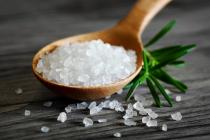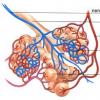Question: How much sweet can you eat?
All children love sweet. All breakfasts, lunches and dinners would consist of sweets and chocolates, give them the will. But still, how much sugar is needed by a child?
The love of the Sugar itself is laid in us at the genetic level. Breast milk is the most first nutrition of the child, but it contains sugar - lactose. With milk mixtures, the child gets maltose and lactose. Gradually expands the range of carbohydrate sources - these are various juices, porridge, puree. All this contains a sufficient amount of carbohydrates. They do not contain sucrose. Some parents swept the dish to eat a bigger child, but it is absolutely wrong. This can lead to the perversion of taste sensations, the child will only have sweet dishes, and this, ultimately, leads to abstract weight.
Starting from the second year of life, the child can already be added to the food some table sugar, as well as sweets. Children from a year to three years per day can only be consumed by 40 g of sugar, aged 3-6 years to 50g. It is best to start with sweet fruit or berry mousses. Then you can start eating a graze, marshmallow, marmalade, in addition you can start there are various types of jam, jam, jam. Fastilles and marshmallows are made of various purees whipped with egg whites and sugar. At first, it is best to give the child a creamy or vanilla marshmallow, then you can already with fruit filling.
Marmalade is made from a mixture of fruit-berry puree, molasses, sugar, pectin. The child is better not to give chewing marmalade. It contains many dyes, it has a sufficiently high density, and the child simply does not fasten it.
In three years, you can begin to give the child cakes and pastries. But they should be without a fat basis creams. You can also begin to give ice cream, but again it's not fat. You need to give a sweet child after the main eating or afternooner.
Caramels and lollipops should only give the child with four years. Up to three years old, the child is better not to give chocolate, marshmallow in chocolate, etc. Chocolate creates a load for the stomach and pancreas, as there is a lot of fat. To give chocolate allergic and children with a pancreatic disorder is strictly prohibited. If there is no contraindications, then milk and white chocolate is allowed to give from three years, but in small quantities. From 5-6 years you can give chocolate other types.
Bee nectar
Honey is worthy of a separate topic. Honey has a high nutritional value, it contains easily digestible sugars, as well as honey has healing properties. Flower honey improves the digestion organs, increases the activity of the stomach, has relaxing actions on the gastrointestinal tract. The honey also increases the effects of the organism to some viruses, is an antimicrobial tool from some bacteria that cause a disruption of microflora in the intestine. With the disease of the respiratory tract honey, anti-inflammatory and expectorant effects.
But it is better to do not turn on the honey to the diet of the child, because this product has high allergenicity. Often honey is part of various baby food products, but its number is very small there, therefore it does not pose a threat. Starting from 3 years of life, you can include honey to food of the child. But it is rarely made to do it, adding 1-2 teaspoons in food as a treat. If the kid has an allergic reaction, then before giving him a honey to better consult with the attending physician.
What makes sweet
Sweet baby need to be done in moderation. Its use in large quantities can cause many unpleasant diseases. For example, to caries. Caries leads to the destruction of solid tissues of the tooth, and the formation of a peculiar notch at the site of destruction. Children often have problems with teeth, precisely because of sugar. This is proven by scientists. The physiological rate of sugar consumption per day is 30 g. With such a quantity, the emergence of caries in children is sharply reduced.
Another problem associated with excessive food use is obesity. Eating food exceeds the level of energy spent by the body and as a result of the extra substance is deposited as fat. Often, in children, with obese, body weight is 20% more than the norm. Such children have serious health problems: the immunity is reduced, there is a functional change in the central nervous system, endocrine glands, the risk of cardiovascular diseases increases, as well as diabetes mellitus. It happens that a child is sick with obesity, low self-esteem, depressive state, etc.
None of the parents, of course, does not teach her child to sweet food. It is often done by chance, due to attempts to solve the problem associated with a bad appetite. After all, children have no habit of habits regularly, so they can change their appetite from day to day. This is due to their physical activity at this age.
Doctors argue that it's not worth forcing children. There are no voluntary starving children when they want to eat, they themselves will be asked about it. But it is not necessary to believe that the child himself can choose the food suitable for it. It is the parents even at an early age, properly to form the right diet from their child. First of all, children must get used to eat cereals, soups, vegetables, fruits. If the child rejects food, then you do not need to go to the meeting and give him sweet.
Love for sweet is laid in the nature of man. Therefore, the child is also needed sweet: this is affirmed by children's nutritionists, the parent experience tells us. The whole question is how many sweets need a baby for full-fledged development, from what age he to give them, what they should be to not harm the children's body.
There are two parent camps: some categorically against giving sweet children at least to 3 years old, others do not see anything bad in afternoon chocolate. However, those and others allow mistakes in building the relationship "Sweets - Baby". What kind? We understand together.
How the child meets sweet
Get acquainted with the diversity of food, the child begins with those products in which sugar has. The first sweet dish in the diet of the kid - maternal milk containing lactose. But even if the child is on artificial feeding, then the same lactose is always added to the children's milk mixtures. In addition to her, another product is added to baby food with the content of milk sugar - maltose.
During the first year of life, the baby usually meets with other sweet products. When the child begins to roaming, it usually gives juices and berry puree with the content of natural sugar. Here, by the way, parental mistakes are possible.
Some moms add sugar in porridge and puree from vegetables. In any case, it is impossible to do this, otherwise the child can pervert taste sensations, he will give up a disadvantage of food, which in the future will almost certainly lead to excess weight and various diseases.
Another parent mistake is to add sugar into the water that you can drink a child. Or - in tea. This is not desirable to do. It is better to ride a baby with disabling water or tea so that he does not have an excessive habit of sweet dishes.
Child from year to three: that he can be from sweets
When the kid will be a year, sweetheart can already give him more. For example, in those dishes, where it is appropriate, you can add a gram of sugar.
It is useful to steer the kid with compotes and dried fruit boosters without adding sugar to them. It is useful to start feeding the child with berry or fruit moussas.
In addition, marmalade, grazing, and marshmallows are introduced into the diet. If you want to give the baby to the marshmallow, it is better if it is creamy or vanilla. Fruit marshmallows to give children undesirable. They contain many dyes and other additives. For the same reason, it is better to refrain from the solid varieties of marmalade: children are not able to chew and swallow them.
After the child turned 2 years old, it is possible to begin a little by chamming with jams and jams. They contain food fibers, iron and potassium, which are much more useful sugar. It should not be given in a pure form of jam or jam, it is better not to add these products to porridge or as an addition to tea. As for sweet carbonated drinks, they are categorically contraindicated children.
It is important to know how much sugar kid can consume a day. Children's nutritionists argue that the daily sugar rate for the baby at the age of 1-3 years should not be greater than 40 grams. It is clear that such a norm is subject to a certain extent conditional and determined what is called, "on the eye", however, parents constantly have to have it in mind. Chocolate and cocoa child is very harmful to the child. Chocolate candies, marshmallows with the addition of chocolate, and other delicacies, which contain this product are harmful. Due to the high content of fats in chocolate, the child may break the normal operation of the stomach and pancreas.
Sweets after 3 years
Starting from 3 years of age, the child is gradually introduced to other sweets, while having in mind that consume more, sugar per day, for the baby is harmful. Gingerbread, cookies and jam, honey can be introduced into the ration. If the baby is fine with the stomach, then you can treat it with chocolate. It is better to start with white and dairy grades, and after 5 years - to give other varieties.
Many children's nutritionists and parents are convinced that dried fruits are much more useful than the same candies. And they are right: in dried fruits there are many vitamins, dietary fibers, trace elements, protein. All this is a very useful growing children's body. Therefore, it will be wonderful if parents manage to dissuade the child from candy, completely replacing them with dried fruits.
As for flour sweets, their parents should be alert. For the manufacture of cookies, gingerbread, waffles, cakes, cakes are flour of higher grades with the addition of a large number of fats and sugar. Accordingly, such products have increased calorie content, but useful vitamins, proteins, minerals and other useful substances there, on the contrary, very little. Especially for the children's body are harmful cream pastries and cakes: they contribute to the development of microbes in the children's body, and therefore the baby can get sick or poison.
Mama on a notic!
Girls Hi) I didn't think that the problem of stretch marks would affect me, and I will write about it))) But there is nowhere to go, so I write here: how did I get rid of stretch marks after giving birth? I will be very glad if my way will help you ...
Separately, it should be said about honey. His healing properties are well known. However, many honey in the diet of preschool children can be harmful due to the fact that he can cause an allergy from a child. While the baby was not 3 years old, giving him honey at all is not recommended. Upon reaching a three-year-old, honey is added to some children's dishes, but not more than one teaspoon per day.
Useful properties of sugar
Sugar is a very important product for human vital activity. Here are some of its most valuable properties:
- Thanks to the sugar, immunity increases, and, in addition, the cold is well treated;
- He adds a man of cheerfulness, contributes to the restoration of forces and improving performance;
- Thanks to the sugar, the mood rises and sleep improves;
- Sugar can reduce pain; In addition, it helps to eliminate spasms;
- When using products containing sugar, the risk of liver disease is reduced, since this product is able to remove toxins from the liver;
- It is an excellent brain stimulator and reduces appetite.
It should be borne in mind that all these useful qualities are manifested only when sugar is not abused. In abuse of the body, instead of use harm.

Read more about Harm from excessive sugar use
However, if sugar is too much - it is harmful for the child:
- Excess sweets leads to the fact that the baby decreases the appetite. Publisted by sweets The child is unlikely to become a porridge or soup. As a result, it will not be necessary for the organism necessary for the normal development: microelements, acids, proteins, vitamins;
- In children who use an excessive amount of sweet delicacies, caries develops very quickly. Especially dangerous in this regard, iris and lollipops;
- Due to the large number of sweets in the children's body, the correct metabolic process is disturbed, which causes heartburn, nausea, gastric pains;
- Children-sweet tech develops obesity and overweight. Because of this, impairment may occur in the work of the central nervous system, immunity can decrease, develop diabetes mellitus, to start interruptions in the work of the cardiovascular system. Obesity affects the children's psyche, which, in turn, can lead to depression.
The most common parent mistakes
Responsibility for reasonable sugar consumption is largely on parents. If mom and dads explain to children that many sweets are harmful, then they themselves, together with children, there should be not cakes with gingerbread, but porridge and soup. Otherwise, the child may suspect parents in hypocrisy. And then the well-known principle will work "than for forbidden - the minor." In other words, children will begin to be called to the parents secretly to argue with all sorts of sweets, as a result of which the diseases of the stomach, liver, pancreas can develop, violate the metabolism.
Here are some mistakes of moms and dads (and at the same time grandparents) concerning children and sweets:
- Sweetie as a reward. It often happens that the child promises some sweetness in exchange for the necessary mom, dad, grandmother or grandfather action or inaction from the child. "Rewritten in the room - you will get a chocolate chocolate", "" Let's stop mapping - I will give a gingerbread "," Tell the poem - buy a cupcake. " Such words can be heard at all. The error here is that the child will get sweets much more than he needs for normal development. In addition, very soon the kid will understand his own benefit, and will be demanding a sweet award from his parents literally for each of his act. And this will certainly develop egoistic traits in the baby;
- Full ban on sweets. This is the opposite parent extreme and, accordingly, the error. A reasonable amount of sweet for a child is useful. In addition, such a ban is fully possible in a practical plan. The child can treat the grandmother's sweets or a good aunt, other children in kindergarten or on the street, etc. As a result, the baby can think about why others are treated by sweets, and mother with dad is forbidden that it can pour out into an open conflict between child and parents;
- Allowing to eat sweets, how much is your child. This is perhaps the most dangerous parent mistake. At first, probably, the delightful child will really "eat how much", but only until parents have sick, should strictly control the amount of delicacy eaten and explain how harm can cause sweets;
- The belief that only candy can be harmful. However, sugar, as is known, is found not only in sweets, but also in other confectionery, as well as in fruits, baking, gas production, etc. Therefore, parents are obliged to follow not only for candy, but also for other sweets that ate or Only going to eat a child.
Is there a replacement to sugar?
Despite the fact that sugar is in reasonable limits for children are useful, in its pure form it is desirable to offer a child. It will be better if instead of sugar kid will be used by its substitutes. There are many such substitutes. Most of them are much safer to the health of the baby than sugar.
Here are their list:
- Oriental sweets: Kozinaki, Rakhat Lukum, Halva;
- Grazing all kinds;
- Oatmeal and fresh grade cookies;
- Marshmallows of white grades;
- Various dried fruits, especially raisins, dried, prunes, dates, apples;
- Natural jams, jams, juices, compotes;
- Chocolate;
All these products contain fructose and glucose, performing the same role in the body as sugar. By the way, table sugar can be replaced by reed. Sugar from the cane is much more useful for the child. It has many times less heavy carbohydrates in comparison with ordinary sugar: for this reason it is easier to digest and contributes to the right digestion. Cane sugar, unlike a table, contains many useful elements and minerals: calcium, potassium, iron, magnesium, phosphorus.
A separate answer requires the question of whether to give sweets to children, sick diabetes or allergies. In this case, medical advice is necessary. The pediatrician will determine how to treat the child and explain what kind of sweetness and in what quantity are allowed. However, even before consultation with the doctor, it should be aware that such children cannot be chocolate and other confectionery with chocolate content. Children's doctors warn that with diseases of allergies and diabetes, the lollipops of all types and caramel are especially harmful.
We also read:
Dr. Komarovsky: From what age do children can eat sweet?
Dr. Komarovsky will answer the question of which age and why children can eat sweet and what kind of types are preferred:
Union of Pediatricians of Russia: how much baby can eat sweet? Tips parents
For any child, a holiday is first of all sweets. This Parents are perceived as an inevitable evil, from time to time thinking: how many sweets can you eat without harm to the body? This was asked by the head of the Children's Nursing Department of the Ramne, Professor, Doctor of Medical Sciences, Academician of Raen Igor Kony. Benefit
Sweets are carbohydrates, that is, the most important source of energy. Children move a lot, their energy consumption is great, it must be quickly filmed, from this point of view, sweets are useful for children. Carbohydrates are also involved in the construction of cell membranes, blood proteins, hormones.
By the way, recently, physicians have a new argument in favor of chocolate - the most popular delicacy. It discovered antioxidants - Substances that are well affected by immune status, metabolism, prevent the development of atherosclerosis, cardiovascular pathology, malignant formations, infectious diseases. In addition, sweet dishes are a source of pleasure, joy, and this is important. It is impossible to raise children in some restrictions, excluding "useless goodies" from their life. So sweets are included by the Institute of Nutrition in the Casual Children's Diet. True, the norms recommended by doctors are significantly different from the amount of candies that children eat in life.
According to experts, for the full development of the child, it is necessary to consume 30-40 g of "sweet carbohydrates" per day: two or three candy, or one zephyrine, or two cookies. On some day, the norm can be doubled, and the next live without sweet.
To distribute the consumption of sweets throughout the day should be thus. For breakfast you can do without sweets, sufficiently sweet tea or cocoa. After lunch - dessert, but it is not required. But on the afternoon the time to give the child a cookie or a piece of chocolate. Dinner - again without sweet.
On the holiday on the table, of course, there may be cakes, and cakes, and candy. But, first, it is worth stopping the children's hand from time to time stretching for the next delicacy. And, secondly, you will have to introduce a restriction on the sweet in the following days. Because candy can bring the body not only benefit. Harm
Let's follow what is happening in the body when it goes there ... the tangum portion of sweet. All that sugar contains candy, caramel, jumped, etc. - refers to low molecular weight carbohydrates - the so-called sugaram, which includes sucrose, glucose, fructose, etc. Whenever the child eats the candy present in it of sucrose forms a milk acid that increases the natural acid medium in the mouth. If sweets are eaten immediately after lunch, then the laid after eating on the enamel of the teeth protects them from the destructive effects of sugars. If the child grabbed the candy on two hours after lunch or before meals, enamel turns out to be untouched. And even the teeth with the most good heredity in this case faces caries.
Sugar belong to easily dismissed carbohydrates, which means that they have the ability to postpone in the body in the form of fats and add us overweight. The unrestrained eating of sweets overlays the regulatory mechanism of metabolism, causes an additional load on the liver, contributes to the occurrence of allergic reactions in the body (corlergic actions). As parents say: "Diathesis began with sweets."
In addition, an excessive amount of carbohydrates strengthens the secretion of gastric juice, especially in children with violations of the vegetative system. Sweets can cause heartburn, nausea, pain in the stomach. Education of taste
What sweets give preference? From sweets it is better to choose chocolate. Chocolate except calories contains potassium, and the necessary organism
bioflavonoids. Shocolate varieties are being developed with additives of vitamins, calcium, iron.
Caramel, To which the Chupa-Chupa-Chupa is beloved by children, is a melted sugar with flavors. Food value - zero, but there is an additional burden on enzyme systems of the body.
To marmalade, marshmallow, dragee It should be treated with caution due to dyes and flavors.
Roasted water Children under 3 years old should not even try. The gas forms air bubbles, due to which the stomach is sweeping. Schoolchildren is difficult to dissuade from the soda: the psychology of "flocks" operates on it - these drinks are advertised on TV, their friends drink them ... But let the soda be at least a drink everyday. And choose the one where aspartames are added instead of sugar or xylitis. And it is more correct to teach a child to drink juices, nectars, fruit drinks - they are less sugar in them, and there are no dyes, as in carbonated water.
Ice cream - A very good product, if it comes not about frozen fruit water - this is just a sweet ice. In the seal, in good quality ice cream, there are calcium, and vitamin B2, and milk. The only "but" - since this is a bold product, it is not necessary to give children with overweight and those who suffer from cholesterol and dyskinesia of biliary tract. If you are not afraid of an angina, it is not scary to eat and pack per day.
Very helpful children nuts. They enhance the intestinal peristaltics, there are a lot of vegetable quality protein in them, mineral salts. But buying better natural, and not salted and in sugar glaze - salt and sugar reduce the beneficial properties of this product.
In general, parents must teach the child to certain sugar and salt standards. In children, as, by the way, the old people have reduced the sensitivity of taste receptors to feel the taste, they choose the extremes: very sweet or very salty dishes. And the taste must be brought up.
Elena Poltava
Harm the sweet for the body has long been proven and no one is in doubt. Disruption of insulin resistance and the subsequent strong sense of hunger inevitably after eating dishes with sugar. With regular abuse, the sweets develop obesity and metabolic disorders. Even an innocent cup of coffee with ordinary sugar leads to an insulin burst and, as a result, a quick sense of hunger. The sugar substitute will help people who do not think of their lives without sweet, rebuild on the new proper nutrition mode.
Sugar - benefit or harm to the body?
Any coin has a backpage, and sugar also in some cases can be useful. If you do not consider extremes, such as the hypoglycemic coma (from which you can exit only by entering the body of a large amount of glucose or simple sugar), then the following advantages of health sugar can be distinguished:
- short-term surge of energy;
- activation of cognitive abilities;
- feeling of cheerfulness;
- strengthening saturation feelings;
- blood insulin surge.
Alas, each of these advantages is overshadowed by negative consequences. Sweets provide a large energy potential, so after taking them into food, a person feels vigor and tide of strength. But most of us after they ate sweets or cake are not sent to heavy training, but proceed to routine affairs. As a result, the energy potential remains not spent and sent straight into fat deposits. The body does not know how to dispose of the energy obtained. So obesity begins: imperceptibly, from several candies eaten with sweet tea in a lunch break.
What carries sugar for the body - favor or harm? Both. But harm from him is still more. Especially should be careful people with a tendency to a set of excess weight and diabetes.
Why nutritionists prohibit eat sugar
Sugar is a popular name of a substance called sucrose. Official information states that cane and are important food products. Dietology denies any obvious benefit of this simple carbohydrate for health. Almost all people who adhere to the right nutrition and follow their weight, refused once and forever from the use of sugar in food.
What makes sweets, cakes, cakes, marshmallows, polware and others are so fatty foods and dishes? Most often it is melted sugar with the addition of oil, trans fat, milk, cream, etc. Thus, candy, caramel, and especially cakes and cakes are not even a simple carbohydrate in its pure form, but a mixture of it with harmful fats. This mixture is very dangerous in the food plan. Sweet tooths inevitably cause harm to health with their addiction to harmful dishes. No wonder nutritionists call sugar "sweet poison."

Who does sugar bring greater harm to men or women?
Women are more prone to the development of a diabetes of second type than men. This is due to the difference in hormonal status. Men, thanks to Testosterone, are not prone to a set of fat in problem places: on the stomach, the inner surface of the thigh, the axillary depressures. In addition, they have much more muscle mass than most women. Therefore, the energy potential that enters the body together with sweet poison - sweets, buns, cakes, cakes, etc., is partly spent on maintaining muscles in tone. But if a man regularly allows himself with sugar abuse, then obesity can overtake it, just it will be necessary for more time than women.
Women from nature are prone to a set of excess weight. This is the so-called "estrogen" fat, which testifies to the readiness of a woman to become a mother and fade offspring. It is good that modern science dietology allows you to regulate your food and maintain weight at an acceptable mark.
Sugar effect on a children's body
Science has already been proven that even a small amount of sugar increases the hysteriousness and excitability of the child. Children with a tendency to hyperactivity and violations of attention of various etiologies are contraindicated by the use of candies, caramels, cakes, cakes, sweets, and the like. It is permissible to use fruits as dessert, they contain no sucrose, but fructose.
Harm sweet to the body of a child is too large calorie and excessive flow of carbohydrates into the body. This leads to the fact that the nerve centers receive a greater load. As a result, the baby becomes capricious, uncontrollable and hysterical. In some cases, it is advisable to fully limit the possibility of admission to food sweets.

Dishes and products containing sugar
These products are known since childhood to all: candy, chocolate, grazing, marshmallows, cakes, dough and sweet bezry-freeze, cream-brule, ice cream, sherbet. Sugar is almost always added to home solutions to enhance taste. Also, alcoholic beverages should be noted. Despite the fact that most of them are not always sweet to taste, they are pure simple carbohydrate. It can be said that this is the energy in its pure form, only it is extremely toxic for the whole organism as a whole.
What do candies do? They represent a danger to health not only because of the high content of sugar, but also a huge content of fats. Such a favorite chocolate is rich in trans-fats, whose harm for the body and the ability to increase the likelihood of cancer has already been proven.

Obesity and sweets: Is it possible to eat sweets and not recover
How many sweets or chocolate can be a day? Of course, there will be no harm from one or two candy. The average caloric content of hundred grams of chocolate chocolates is about 550 kcal. This is half a normal daily diet, if you measure it in energy value. There are no places for proteins and useful fats. And this is just a hundred grams of candy!
If a person can eat one candy on a day and dwell on it, it means that such a habit will not bring harm.

Alignment of simple carbohydrates
Almost all people are difficult to limit themselves in relation to the use of harmful sweets. Some nutritionists note that for sensitive people, candy and pastries become a kind of dependence, drugs.
These statements are based on studies: sugar contributes to the development of endorphins - hence the temporary improvement in the mood and the appearance of cheerfulness for a short time after drinking sweet foods. Therefore, it is so difficult to keep yourself and after one candy not to eat ten more. Many people prefer to completely abandon sweets than to tease themselves with one or two candy.
How much sweet can be a day that the relationship does not develop? This question is difficult to give an accurate answer. Each person is individual. The rate of absorption of simple carbohydrates depends on gender, age, metabolism, weight.

Causes of Diabetes Development
The cause of the development of a diabetes of the second type is a long disturbance of the basic bases of proper nutrition and regular abuse of simple carbohydrates. Most sweet tooths think that they will not touch them. But by 40-45, many put this diagnosis.
People with diabetes of the first type are not guilty of development at home: most often he has hereditary causes or appears due to a strong nervous shock. Patients with a diabetes of second type most often are guilty of themselves in the presence of this diagnosis, since over the years neglected by the advice of endocrinologists and nutritionists. In 95% of patients with second-type diabetes, obesity is also diagnosed.
The main method of treatment is a special diet that implies a complete refusal of simple carbohydrates and products with a high glycemic index. It is permissible to use sugar substitutes for diabetics. If the patient does not find the strength to refuse sugar, the disease will progress. In diabetes, chronic kidney dysfunction is developing, the disease is accompanied by strong edema, fainting, and in time there is a need to transplant donor kidney or regular visits to hemodialysis procedures.
Is it possible to somehow level the harm of sugar
Harm the sweet for the body is difficult to overestimate. Is there a way to reduce its harm or prevent assimilation? Many diabetics or people with obesity are trying to find unusual recipes. Cakes without sugar, fruit slots, use of sugar substitutes - all this effective ways to reduce the harm of sucrose.
What is better, honey or sugar? This question is often asked to nutritionists. Of course, honey is more useful, but it also has a high glycemic index and a large calorie content. If a person is unable to abandon sweet and hesitates that choose, honey or sugar, it is better to prefer the first option.
There is also a class of pharmacological preparations that do not give sucrose to worry. These are the so-called carbohydrate blockers. These tablets have quite a few side effects.
Harm the sweet for the body almost completely comes off with no regular use of the sugar substitute. They are different in composition and not all of them are deprived of calories. For example, Stevia-based funds are also rather calories, but have a smaller glycemic index.

Synthetic and natural sweeteners
Artificial (synthetic) substitutes are sweeter, so it is very easy to overdo them with adding them to drinks. Most often 1 tablet is equal to 1 teaspoon of sugar sand. Do not give in to tempting discounts and buy several bubbles of synthetic sugar substitutes at once. They are very economical in use and often shelf life goes before the need to open the bank will appear. Synthetic sugar substitutes for diabetics are sold both in liquid form and in the form of tablets, capsules, bulk powder.
Natural sugar substitutes are distinguished by the fact that the carbohydrate part available in the components is cleaving slowly, it allows blood glucose indicators to remain normally. Thanks to this, the glycemic index of such sugar substitutes is low and allows them to be used in special recipes. Cakes without sugar on Stevia, Gogol-Mogol, homemade meringue, cottage cheese ice cream - all this is easy to prepare at home with natural sugar substitutes.
List of bases for sugar substitutes
What kind of substance can replace sugar? Below is a list of the most popular and inexpensive.
- Cyclamat and aspartame are popular in the food industry. It is with their addition to produce drinks "Cola Ziro" and "Peppi Light" - very sweet, but with zero calorie. In its taste properties of cyclamat and aspartame, Sugar is 200 times. Under the action of high temperatures are destroyed.
- Sakharin Sugar Sugar 700 times. Thermal processing should be avoided, which destructively affects the taste effect of the drug.
- Sukraloza is perhaps one of the few synthetic sugar substitutes that approve of doctors in relation to diabetics.
Sports Saharo Changers for fat burning
Almost all sweeteners that are sold on sports nutrition store shelves are made on the basis of erythritis. This is relatively safe sweetener, with moderate taste properties. Five grams of erytrite for sweets are equivalent to a tablespoon of sucrose.
"FIT Parade", "Main Kraft" and other sugar substitutes for athletes, intended for use in the period of fat burning training, contain erytrite. The average cost of one jar (100 grams) is about five hundred rubles. These sugar substitutes are most beneficial and safe both in terms of cost, so in terms of concern for their own health.
Alternative to factory sugar substitutes
Lovers of all natural should be taken at the note natural substitutes of sugar and sweets, which have a relatively low glycemic index and in rare cases can even be taken into food with diabetes mellitus:
- bee honey - an energy source with antibacterial and anti-inflammatory properties;
- agava syrup - taste and smell are similar to honey with a pleasant caramel color, added to baking and cakes;
- maple syrup prepared independently without adding sucrose.
Sweet taste An newborn child is familiar from birth, because breast milk contains lactose or milk sugar. All mixtures for baby food are also lactose and besides him elsewhere. The indisputable fact is that all children love sweet, doctors explain the fact that children already in the womb of the mother raises the wrong taste. After all, it is no secret that pregnant women themselves often cannot refuse sweet.
Accustomed to sweet in the womb motherAfter birth, the baby continues to suck breast milk with a sweet taste. Canned juices and yogurts, which are beginning to feed his parents, also contain a lot of taste additives with lots of sugar. Many parents add sugar to porridge or kefir in the hope that the child will better eat them. Grandmothers, guests, and the parents themselves are increasingly learning the child to sugar, treating or encouraging it with candy. Thus, the kid has a dependence on the sweet and often he does not want to eat anything that has no sweet taste.
Relieve taste To the sweet child is necessary since childhood. It is impossible to refuse the child completely in use, and it is not necessary. According to American scientists, there is a link between the preference of the sweet and biological needs of the body. Children love the sweet due to the need of the body in growth, as soon as the growth rate of the body slows down, then the thrust to sweet decreases. Scientifically proved the fact that sweets stimulate the production of serotonin, which, together with endorphine, is considered a hormone of happiness. And when a child in a bad mood, he is experiencing psychological discomfort, he has a need for sweet.
Actually sweet - This is the source of easily visible carbohydrates of high calorie. Therefore, naturally, the desire of the children's body is to receive a calorie food that has a pleasant taste. That is why when a sweet, child is so difficult to refuse him.
Daily rate sweet use for kid under the age of 3 years is not more than 30-40 grams. Excessive use of sweet can lead to a child obesity, to the development of caries, diabetes, diathesis and cardiovascular diseases.
In order to exclude risk of developing these diseases, It is necessary to teach a child from the little years to the right nutrition, but also not to pedagogically scold and punish a child for the fact that the kid ate a candy or a piece of cake. In the company of peers or together with other children, let the child taste a delicacy, it simply does not stand it to bother at home by cookies, chups, chocolate bars, carbonated drinks and colored chewing marmalands. After all, sweets are not only chocolate candies. There are many other useful sweet delicacies. This is primarily berries, fruits, raisins, dried fruits, fresh juices, honey and others.
Eating sweets by a child Must be monitored by parents, you should not leave a vase with sweets on the table, if the child can not stop, eating only one. Parents must explain to the baby that there is chocolate, candy and other sweets are necessary in reasonable quantities. For example, if it is eating one chocolate candy for lunch, then he will drink tea without a sweet dessert. Doctors do not recommend giving caramel candies to children up to 5 years, preferably chocolate. In high-quality chocolate candies contain substances that can contribute to the strengthening of the child's immunity and prevent the development of infections.
A B. carameli There are no useful properties, as they are melted sugar with the addition of flavors. Children's masticmers and chewing marmalands also contain a large number of dyes and additives that can harm the child's health. Ice cream made of high-quality products is considered useful for the child, but it must be given no more than 2 times a week for 100 gr. All fermented milk products and cottage cheese Try to give a child without sugar, with the addition of raisins, banana, apples, kiwi, strawberries and other fruits. If a child has no allergies, you can add a little honey. Honey has healing properties and is a storehouse of vitamins, but its calorie content is 350 kcal per 100 grams. Children are recommended to use only one teaspoon of honey per day.
Although it is clear that sweet use Does not add health to the child, completely eliminate the sweet baby from the diet should not. We were all children and looked forward to a delicious gift from parents. We just did not have such an abundance and diversity of sweets that our children have today. Limit the use of sweet in children, but at the same time do not forget to show him an example with your behavior. What is the sense not to give candy for children, if you eat them every day in an unlimited quantity, surprising your toddler with your appetite.
- Return to the Table of Contents " "














